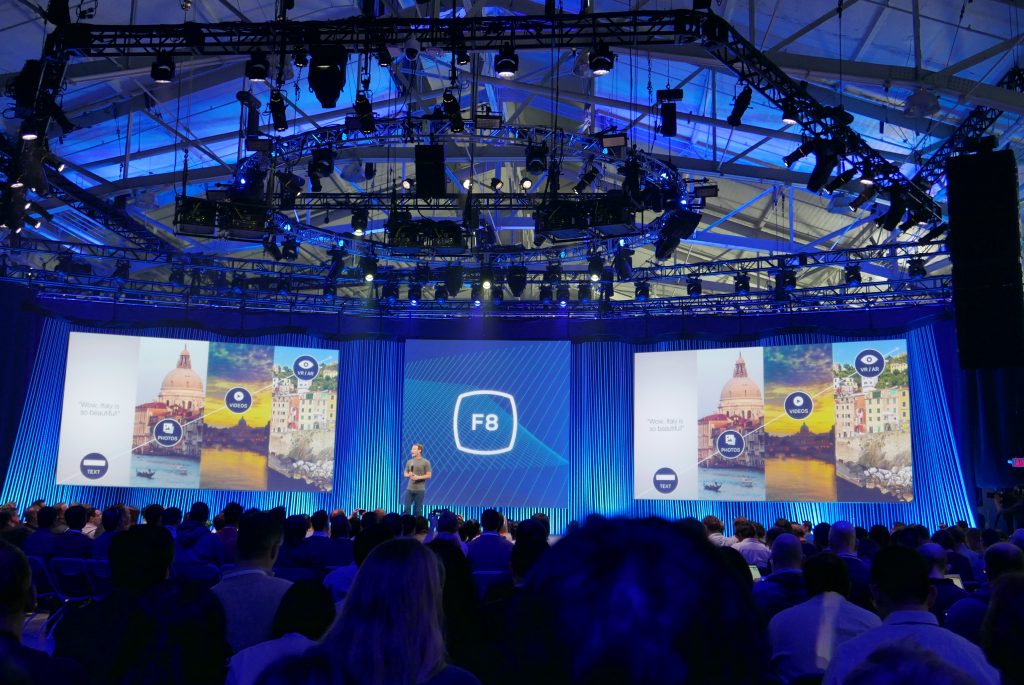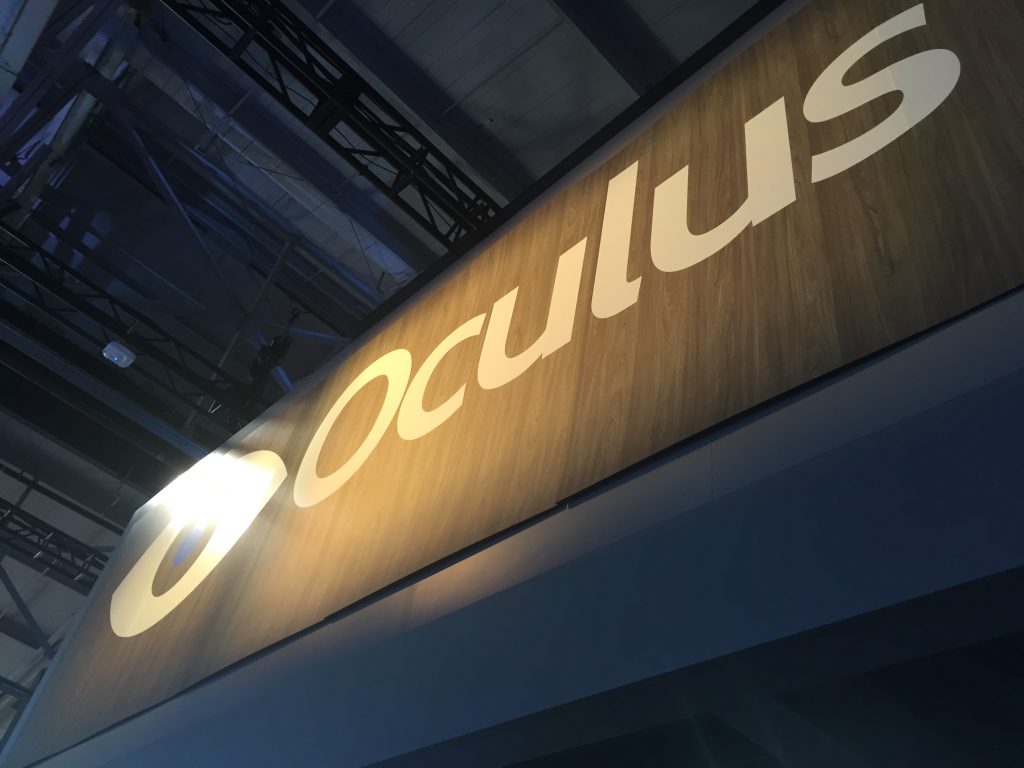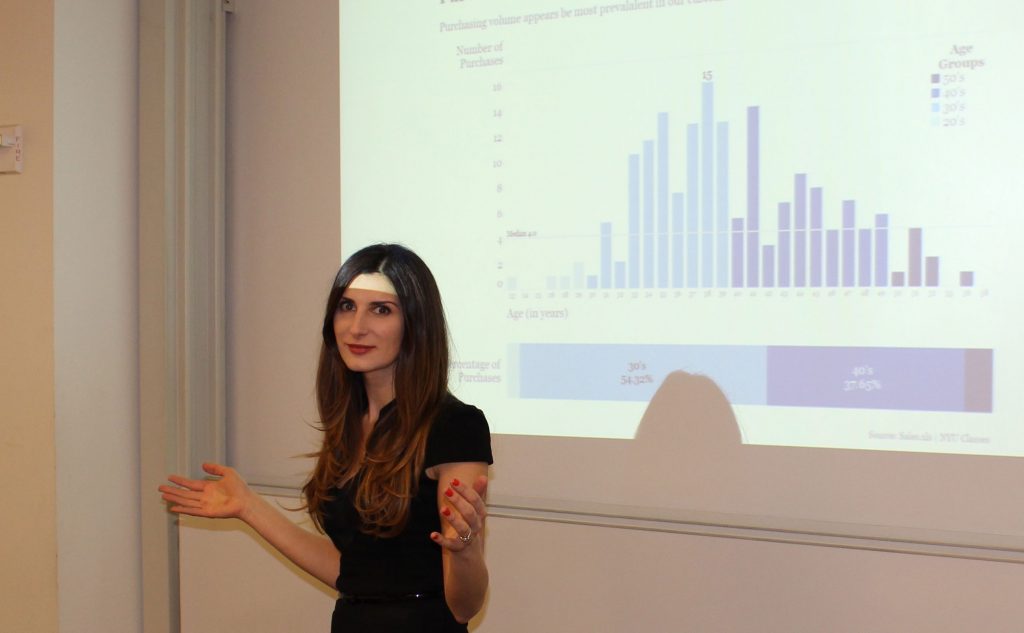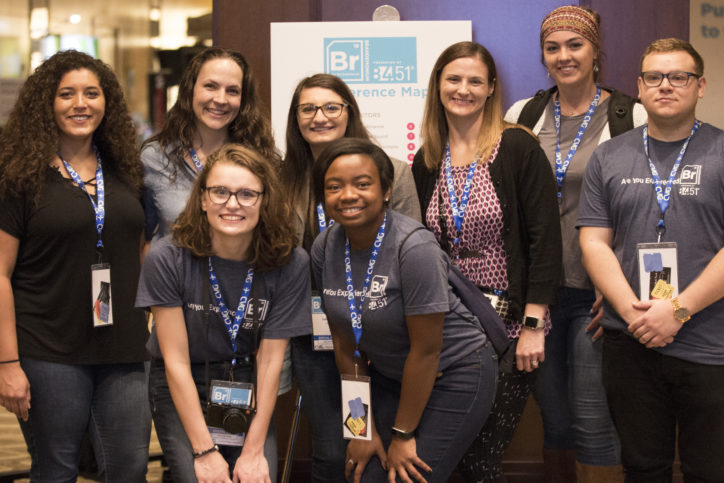This year at Social Media Week in New York City, I organized and moderated the panel “From Immersive Video To Animated Selfies, How We Will Express Ourselves In 2016.” The panelists included pioneers in data visualization, podcasting, virtual reality, and content creation for the mobile and social web: Kristen Sosulski, Associate Professor at New York University’s Stern School of Business and the Director of Education for the NYU Stern W.R. Berkley Innovation Lab; Amel Derragui, Founder and Host of Tandem Nomads; Beth Amann, Creative Director of Sociality Squared; Jey Van-Sharp, Business Strategist & Market Analyst for MyÜberLife; and Jess Engel, Executive Producer for Virtualize. This event is part of the ongoing S2 Exchange series dedicated to bringing thought-leaders together to discuss the future of content on mobile and social.

The panel title was inspired by a slide Mark Zuckerberg shared at the 2015 f8, Facebook’s developer conference. Mark Zuckerberg explained why Facebook is investing in virtual reality: it comes down to how Facebook users express themselves. Mark Zuckerberg said five years ago that the most common content shared on Facebook was text, today it’s photos, and in five years, it’s going to be video. Looking even further out, it’s going to be immersive video, like augmented and virtual reality. That day, he also announced “spherical video” – a taste of the 360 video trend which is becoming more prevalent. This evolution in content is bringing viewers closer to the experiences being shared.
Fast forward to 2016, and there are more content types than ever before for people and brands to express themselves: cinemagraphs, animations, illustrations, graphics, memes, GIFs, selfies, animated selfies, emoticons, emojis, bitmojis, 360/immersive video, streaming/live video, podcasts, and that’s just scratching the surface! It’s no surprise that Facebook recently released “reactions” to enable users more opportunities to express themselves when engaging with friends’ or brands’ content on Facebook.
It can be overwhelming to navigate through all of these varying options to decide what content type is the best to express your brand story. The panelists gathered to share insights on 2016 content trends to help marketers wade through these exciting, content waters.
Here are the Top Takeaways on 2016 Content Trends:

Virtual Reality
Video is huge in 2016. We have streaming video with Periscope, vertical video with Snapchat, live video with Facebook, and 360 video with Facebook and YouTube. Marketers can’t ignore this trend. For the panel, we delved into a trend that’s in its infancy: augmented and virtual reality. The industry is set to surpass $150 billion in revenue by 2020. Right now it’s the Wild, Wild West for all things AR/VR, but with companies like Facebook, Sony, Microsoft, Samsung, Google, and the New York Times investing in the technology – the timing is ripe for the technology and the momentum for VR to take off.
In regard to the types of content being produced for virtual reality experiences, there aren’t any full length videos yet. VR is mostly serialized, and the experiences are ten to fifteen minutes long. Creators in the space are still working on the language of the medium and how to tell a story where viewers can explore 360-degrees in a “frame.” There are different levels of VR experiences as well, ranging from more passive viewing to interactive ones where you can actually pick up real objects that correspond to the virtual experience.
For marketers, you have to ask: “Why are you doing VR? Is your audience going to care? And how do you play into the strengths of the medium?” To get involved in VR right now, there are high barriers of entry. You need a 360 camera, stitching software, ability to create big animation, and a gaming engine. There are a lot of emerging companies in the space that you can work with though. Marketers should think about playing with 360 content to get a foot in the door if it’s a good fit for your goals. It’s a new way to engage with your audiences, and with Facebook 360 and YouTube 360 videos poised to become more and more popular in the near future, it’s a great entry point into the space.
Of course, the key to success in virtual reality will come down to the tried and true ethos of creating great content and experiences for VR users. It’ll be really exciting to see what creators and brands do with virtual reality!

Podcasting
Podcasting is a popular medium that has been around for a while. It was actually the launch of YouTube in 2005 that stalled the initial momentum around podcasting, but it’s back in the spotlight largely due to the popular show Serial. Today, there are 46 million Americans listening to podcasts every month – much more than radio.
Unlike the other content types shared that are very visual, podcasting is an audio medium which has its own, unique benefits. It’s an intimate experience to be in someone’s ear, and the voice can’t lie. Since podcasting is a broadcast medium it may seem counter-intuitive but a big key to success for podcasting is to listen to your audience. If you’re doing your job, your show will be building a relationship with them, and your audience will give you feedback whether it’s on your website, social channels, or through email. Podcasts in many ways are an ongoing dialogue with your audience, one episode at a time. Building a loyal and engaged following can be a very powerful asset for a brand.
The great thing for marketers is that podcasting has been democratized both on the production and consumption side, and it’s very inexpensive to produce so anyone can have an audio show. For those considering launching a podcast, they should make sure the show speaks to a specific, tightly defined niche. Consistency is important in podcasting in establishing trust with your audience. Whatever schedule you decide to go with, stick to it. Before launching, start teasing and cross-promoting the show so that you have an audience ready for the podcast on launch day and don’t stop cross-promoting episodes after the launch either. Amel recommends starting with at least three episodes produced and ready to go so that you can easily stick to your publishing schedule out the gate. With more and more people getting into podcasting, one pro-tip to help your podcast get discovered is to pick an eye-popping graphic for iTunes.
There are more content creators getting into the game and with the rise of smartphones, more people are easily tuning into podcasts from the palm of their hand. We’re also seeing the rise of networked podcasts and shows following the traditional cable model. Serial has paved the way for more podcast creators to refine the medium and it’s a great time for companies to get on the podcast bandwagon!

Data Visualization
Not to be confused with infographics that provide data at a summary level, data visualization is an interface that allows us to explore and allow the audience to find meaning in the data and the information itself. Given that every company is sitting on mass amounts of data, whether from their social accounts to business insights, data can serve as the primary source material for storytelling and making sense of the data. The way you tell a story with data is through the imaging, with charts and graphs. Marketers have to consider what the data means in real life. Basically, visualizations are representing phenomena and the data that exists in real life.
With data visualizations, similar to every content type, you want to think about your audience first. Content and context plays an important role for this medium – you always want to think of where your audience is and how they are going to consume the story. If they are physically in front of you, the way you will present your data will be markedly different than if they’re reading something in a report or online, and neither need nor should be passive experiences. You also want to tailor the graphics based on what your audience already knows and what they don’t know. Meet them where they are and don’t be so arrogant with visualizations. How many people have looked at a chart and graph and said, “I have no idea what that means”? That happens way too often so being able to relate to your audience and walk them through what they are actually seeing and clearly communicate that, not only verbally but also visually, is key to successful data visualizations.
The idea here is that you don’t want to make the audience work too hard to understand the data, so a narrative can really lead them through it. With data visualization storytelling you always want to ask “What’s the takeaway? What’s the action you want the audience to take? If there’s not action, what do you have to say to them and why are they listening to you?”
Luckily for marketers there are simple tools like Excel, PowerPoint, or Keynote that can be used to create data visualizations. More advanced platforms include Tableau that creates interactive graphics and then there’s D3, Python, and R for more advanced data visualization creators. The biggest barriers to entry to data visualization are being comfortable working with the data; understanding and knowing your data; making sure you’re not lying with data; and making sure that you’re not showing something that doesn’t have any meaning at all. Just because you have data and you can turn it into a line chart in two seconds doesn’t necessarily mean that you have a story or have something that anybody is going to care about. Marketers should definitely consider using data visualizations and there are a lot of resources online to help overcome the barriers. Storytelling comes in all different forms and marketers should consider data visualizations when exploring and explaining data.

Social Media Graphics
Using graphics is a key best practice to help your brand stand out among the streams of information users consume on social channels. As screens get smaller, brands are all competing to create that thumb-stopping content to reach and engage with their audience. Out of the multitude of options of communication, still images are the most effective to quickly convey information – we process images 60,000 times faster than text. Facebook sees more than 350 million photos uploaded each day! Photos drive engagement on the platform and get the most clicks. Tweets with photos see 313% more engagement than those without them. Images are behind Instagram and Pinterest’s success and a driving force of Snapchat’s unprecedented rise of popularity.
Content and context also play a crucial role when it comes to graphics for social media. Context in thinking about how your graphics live on the different platforms. For example, with video on Facebook you have to keep in mind that the video will auto-play and people are watching the content silently before they turn on the sound. Even though Facebook and Instagram are owned by the same company, the reason why users are on the platforms and how they consume and interact with the content is completely different. Each platform has a different community culture and ways to optimize content. There are overarching principles that can be applied across platforms and they include:
Sell less, inspire more. Fans on your platform are already your fans. There’s no need to make all your graphics look like an advertisement for your service or product. Because there’s this intermingling of content from both personal contact and brand pages in the average news feed, overly sale-sy stuff stands out like a sore thumb. Alternatively, use your brand’s feed graphics to inspire, train, or inform your fans.
Consistency is key. Social media graphics don’t have to be super polished, but they should have a consistent look and feel. If you’re going to put your logo on each image, put it in the same location every time. Use a consistent color palette, or style of illustrations or stock photography. This helps fans recognize your content in their feed, and link it back to your product.
Humanize your brand. If your brand was a person, what kind stuff would you post to social? Your social feeds are a unique platform for your brand to express its opinions and what it’s excited about.
The only limitation for marketers is their creativity when it comes to graphics and social media. While there are unlimited options, you do have limited time and resources. Experiment, commit to your story, and think quality over quantity when it comes to what channels your brand lives on, and of course, keep your audience at the focal point of all of your efforts. If you’re not already on the GIF/cinemagraphs/moving images/short video bandwagon, it’s time to embrace them because they’re here to stay! Out of all of the 2016 content trends, every brand should be utilizing graphics in their social media marketing efforts as it is the easiest to produce and has a high impact.
It’s an exciting time to be in marketing with all of the different options to express brand stories! Do let us know what you questions you have when it comes to content trends on mobile and social.


